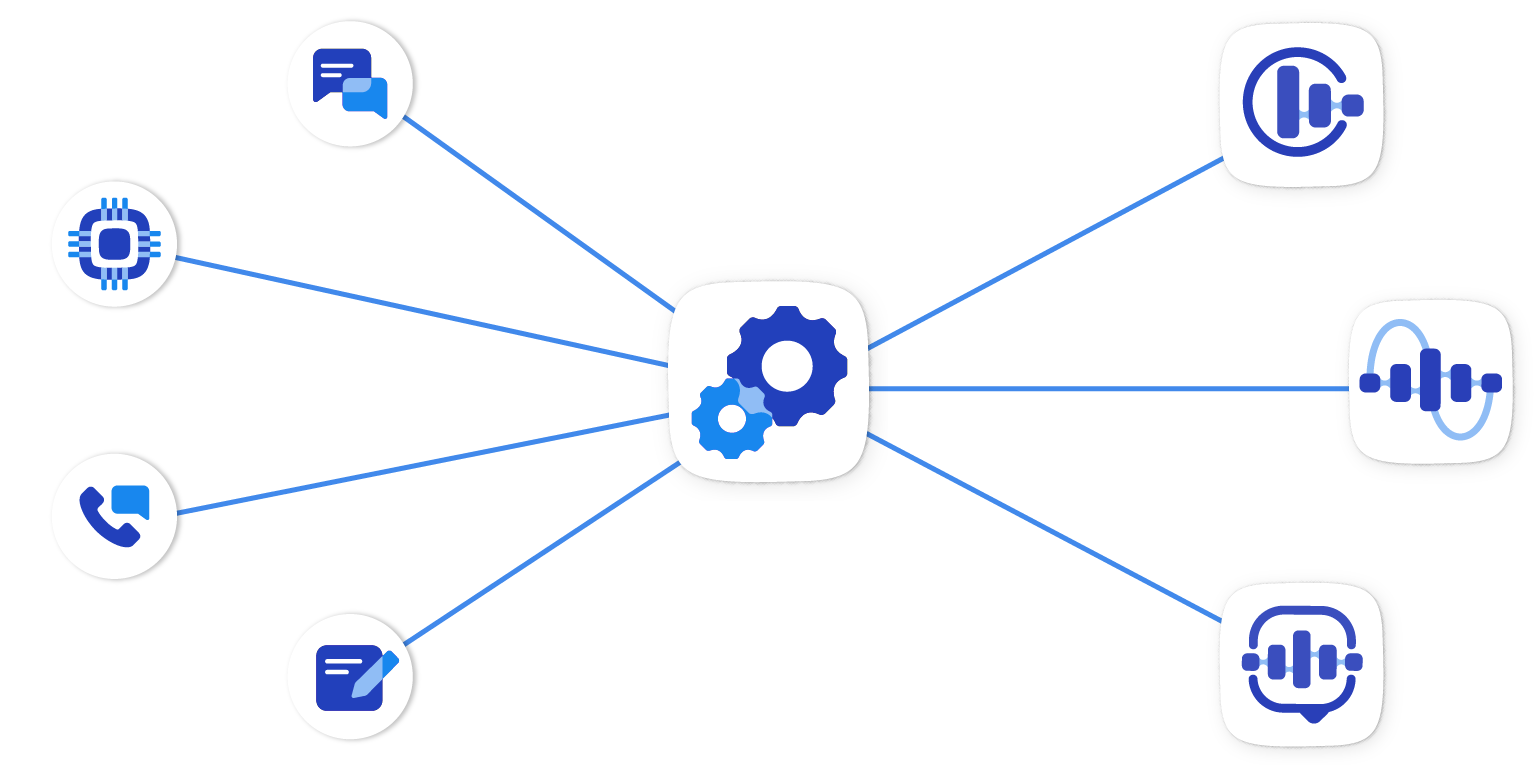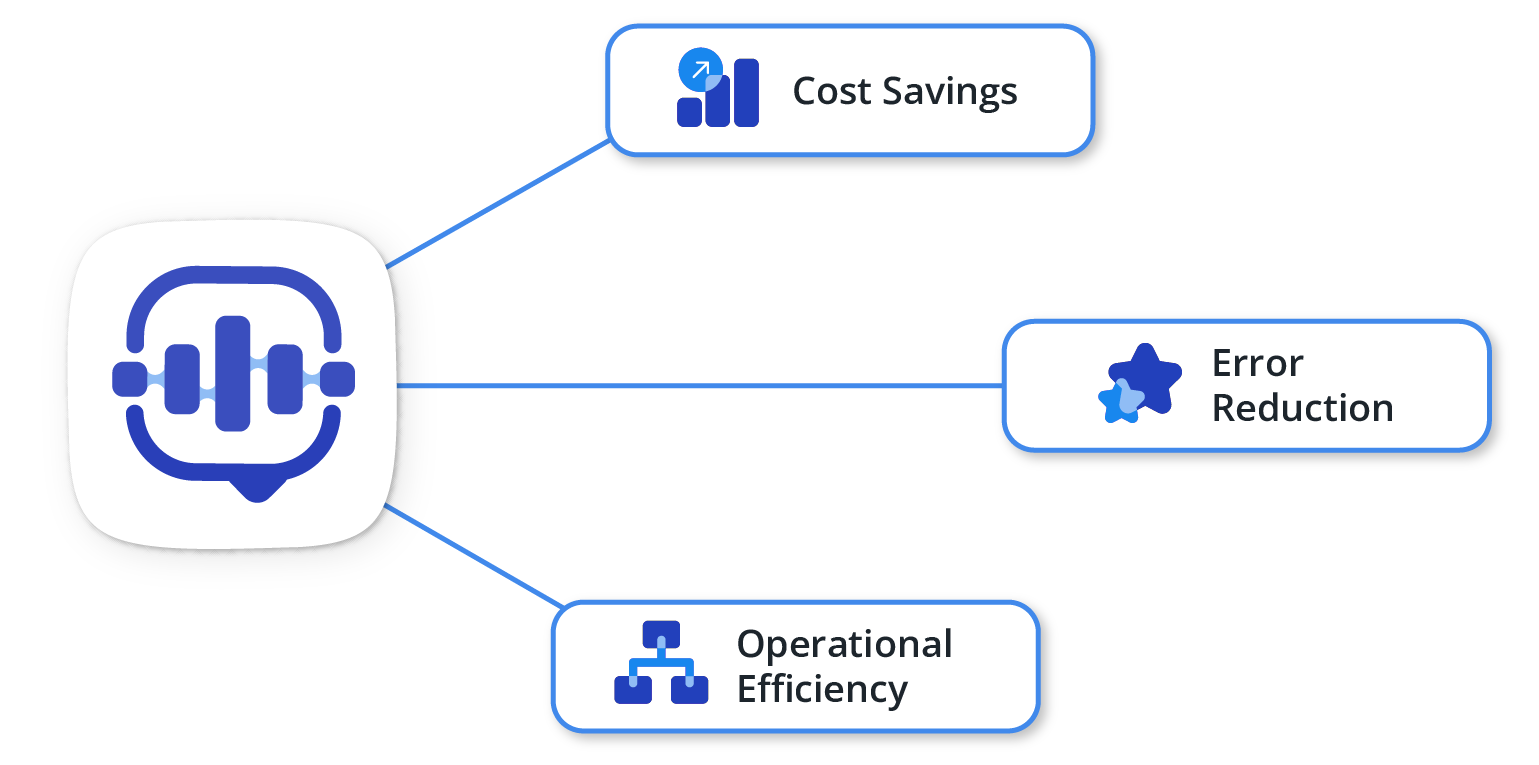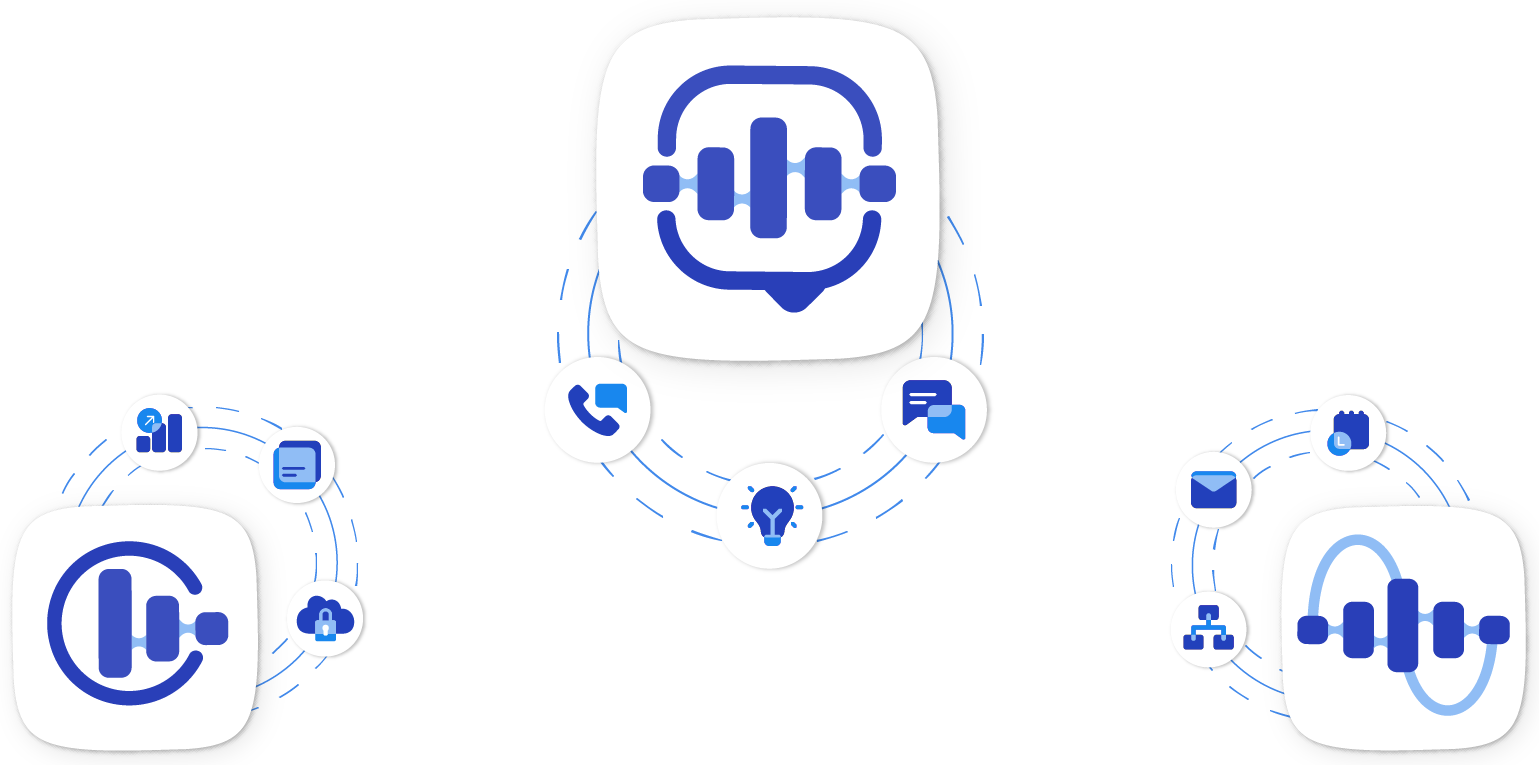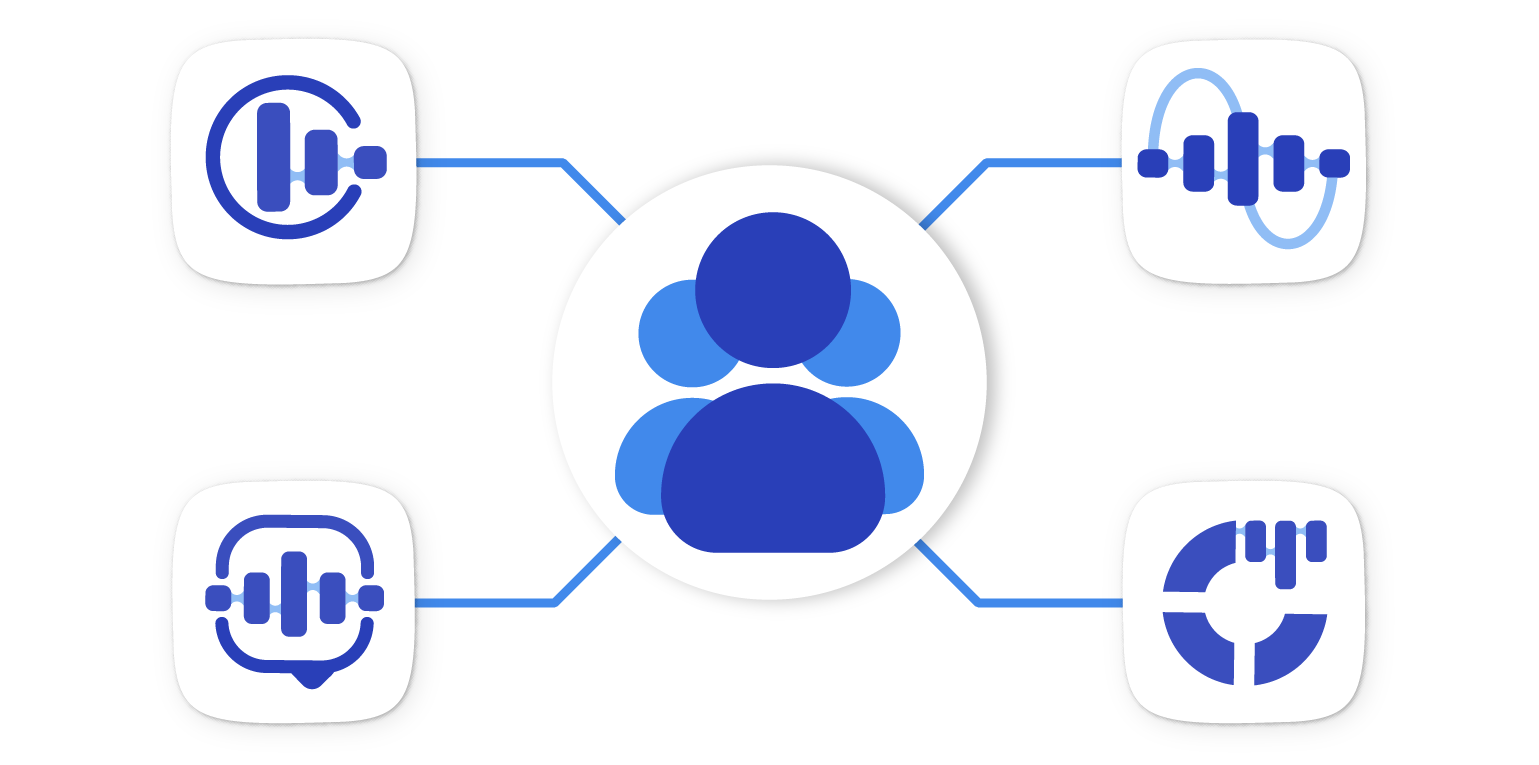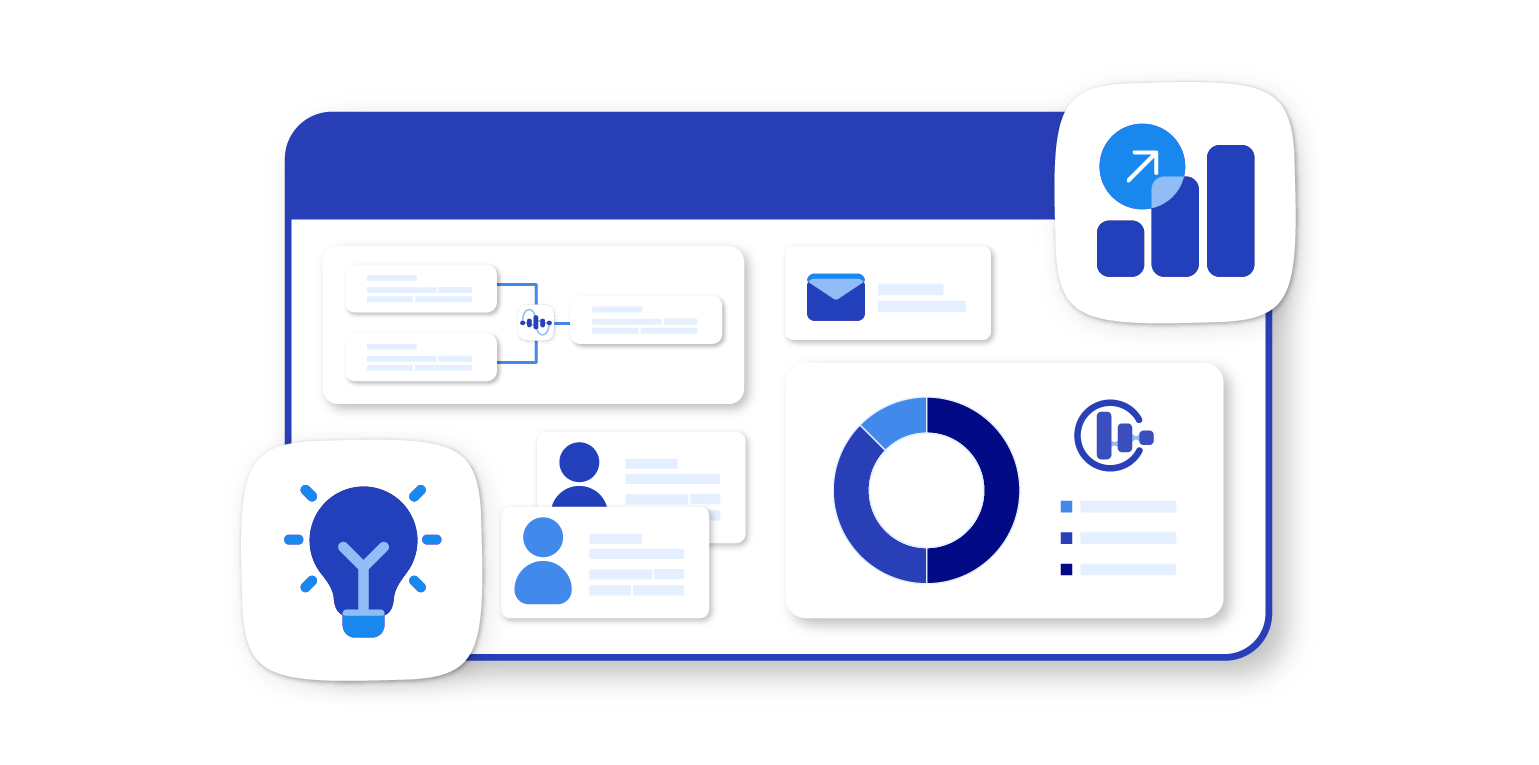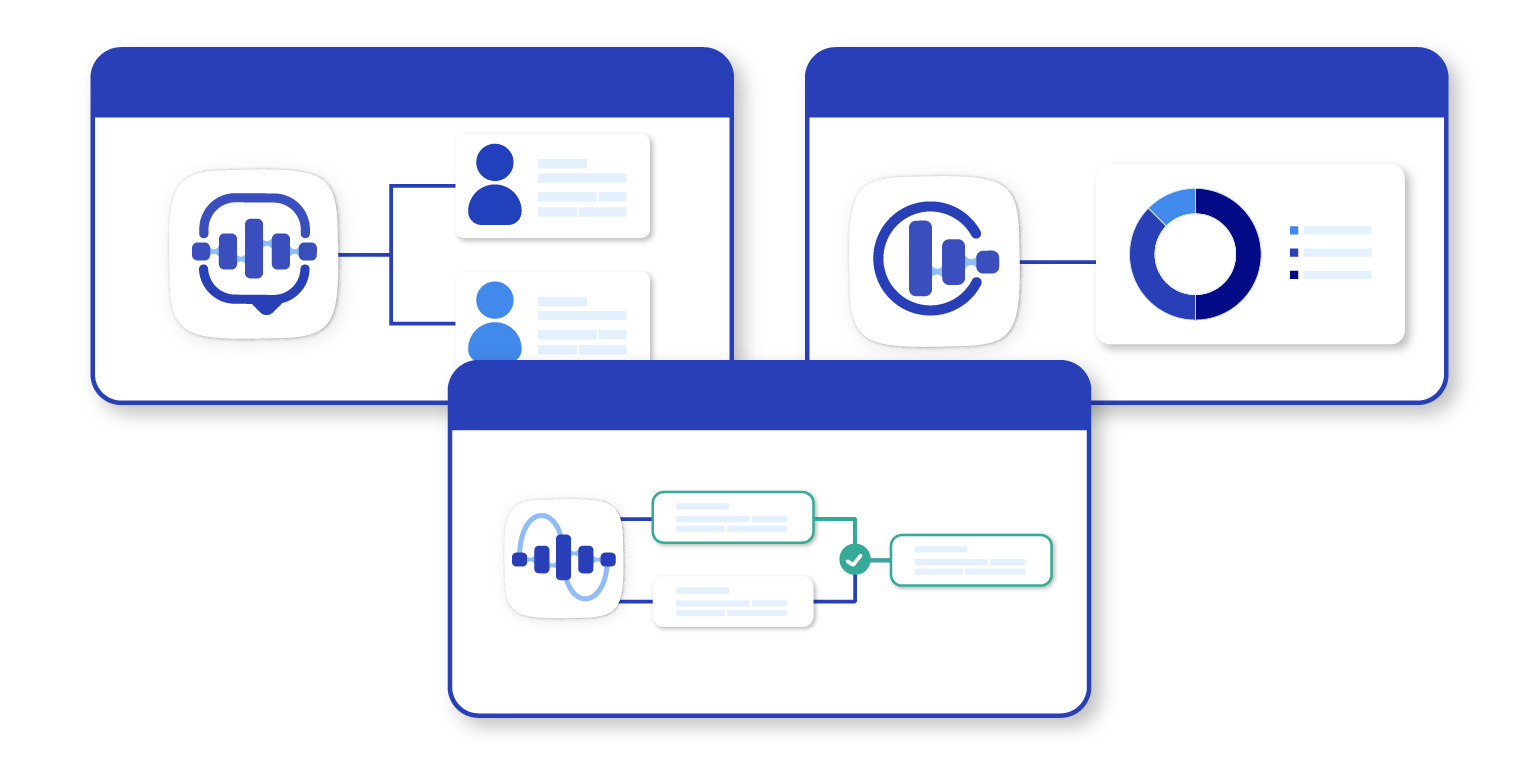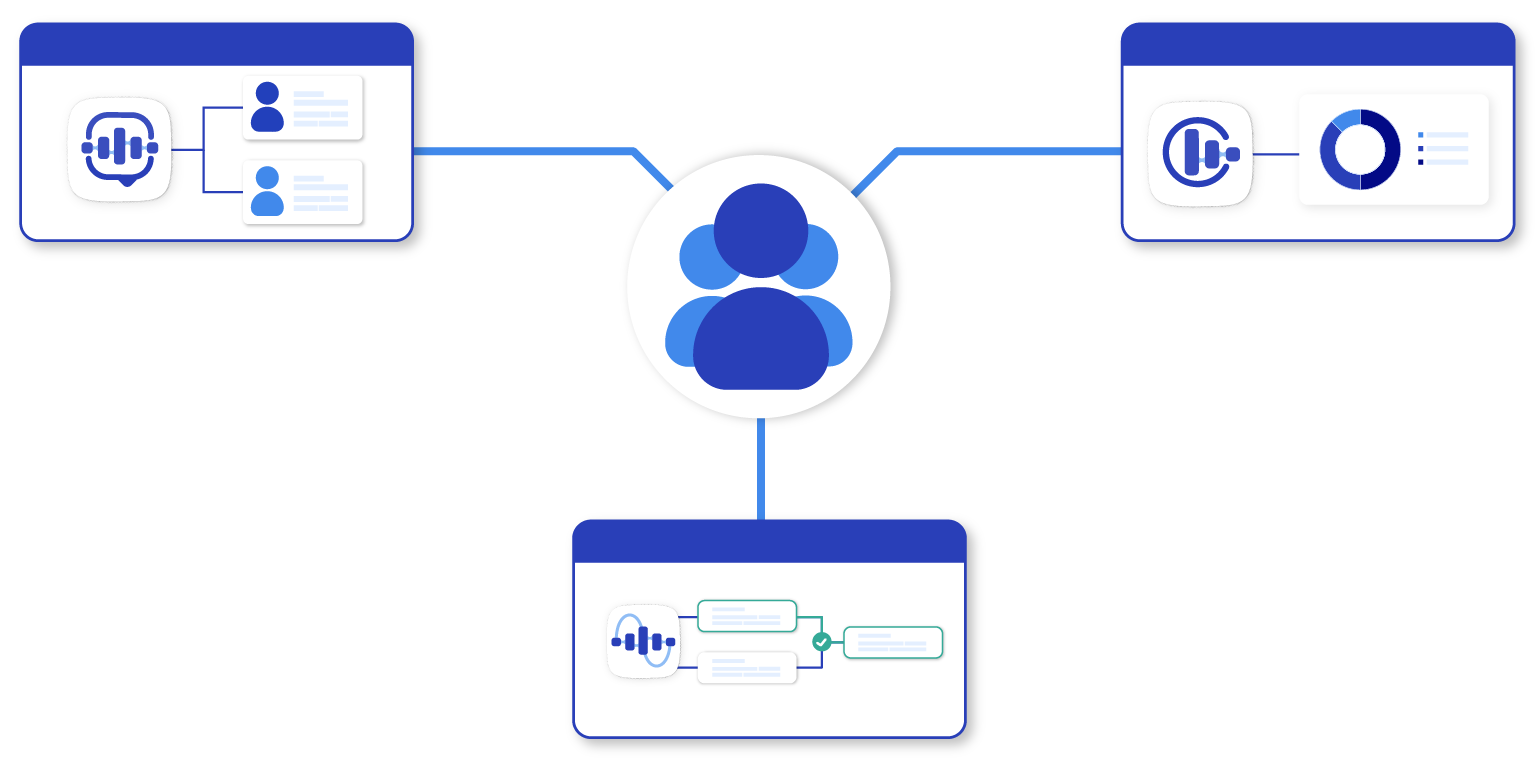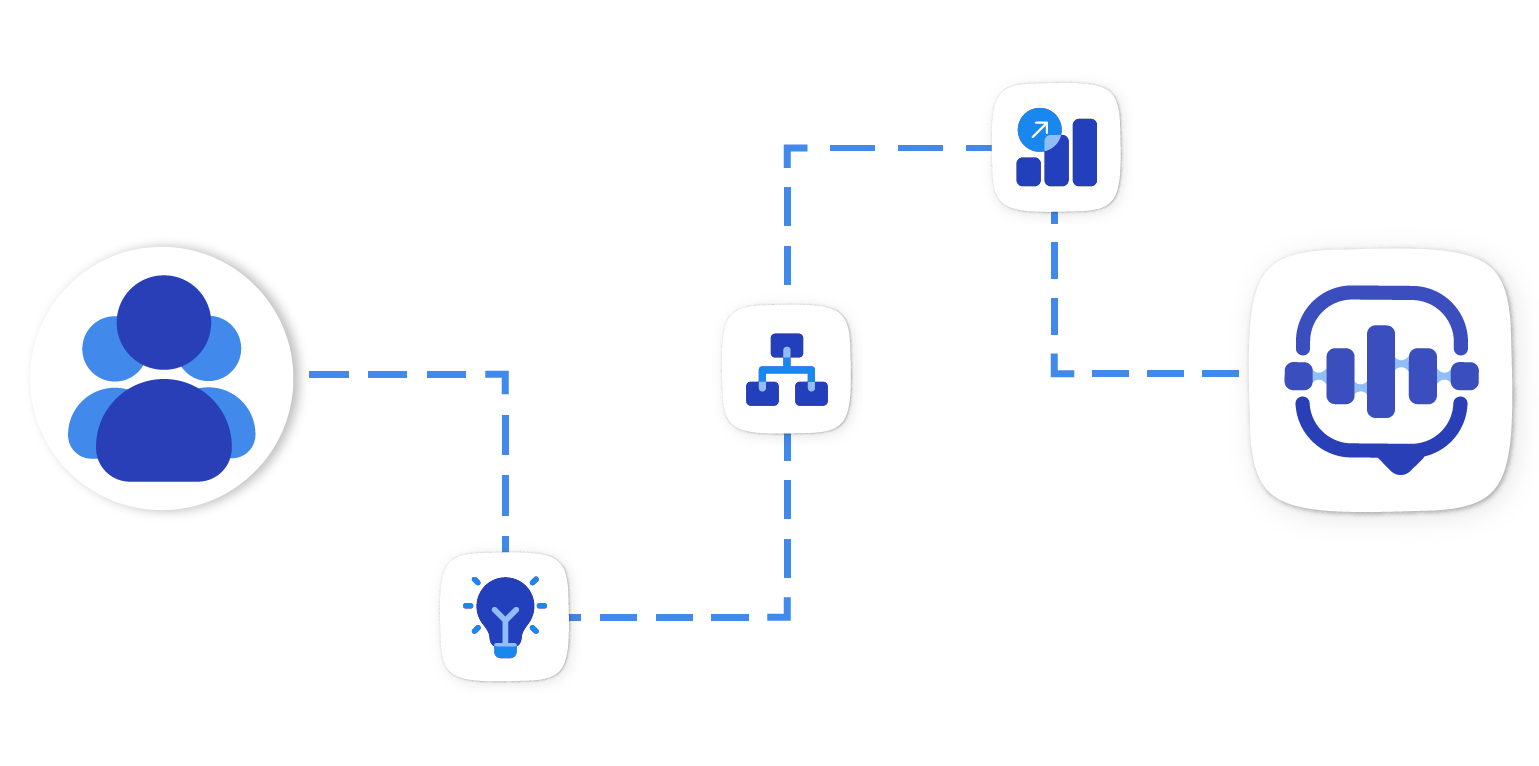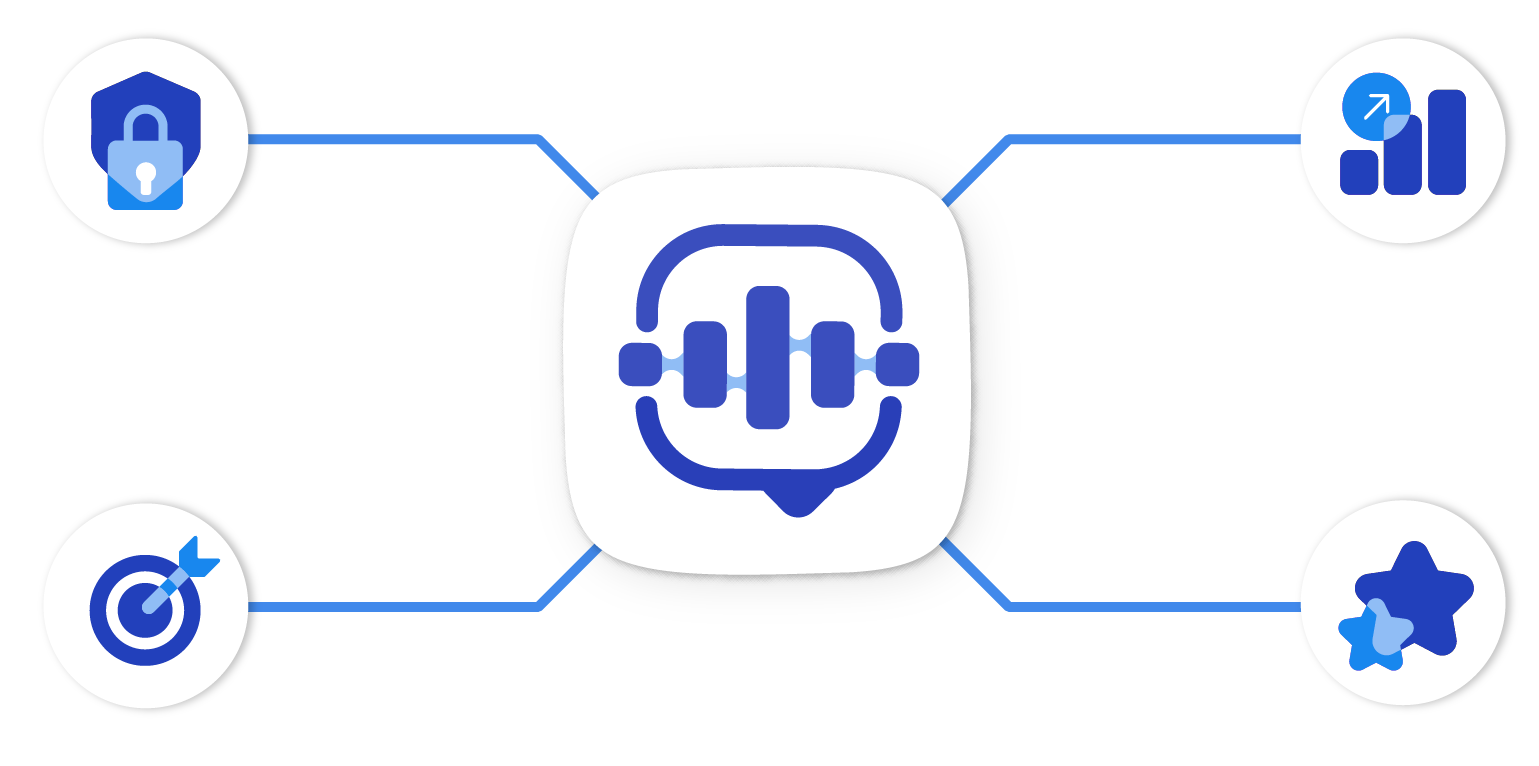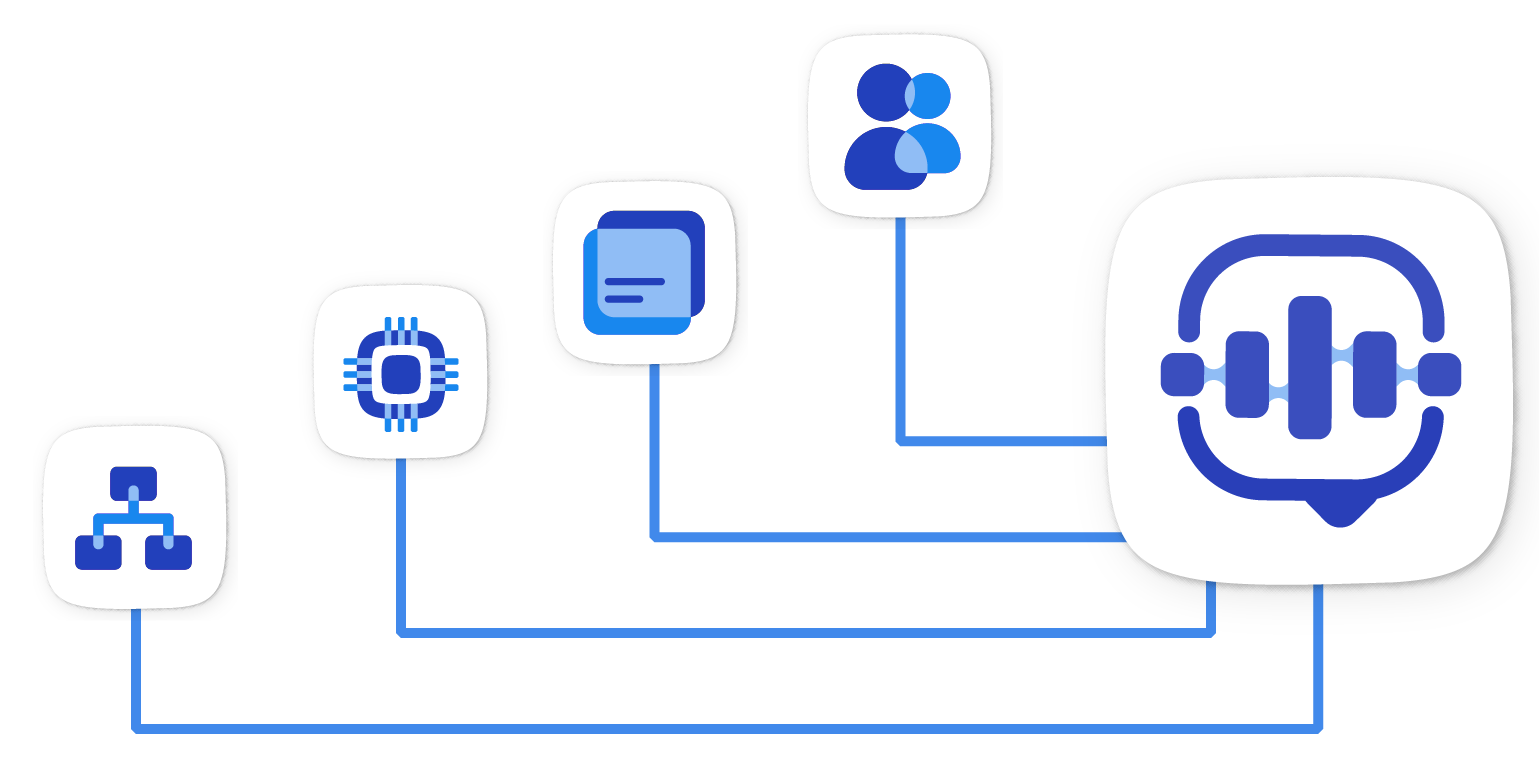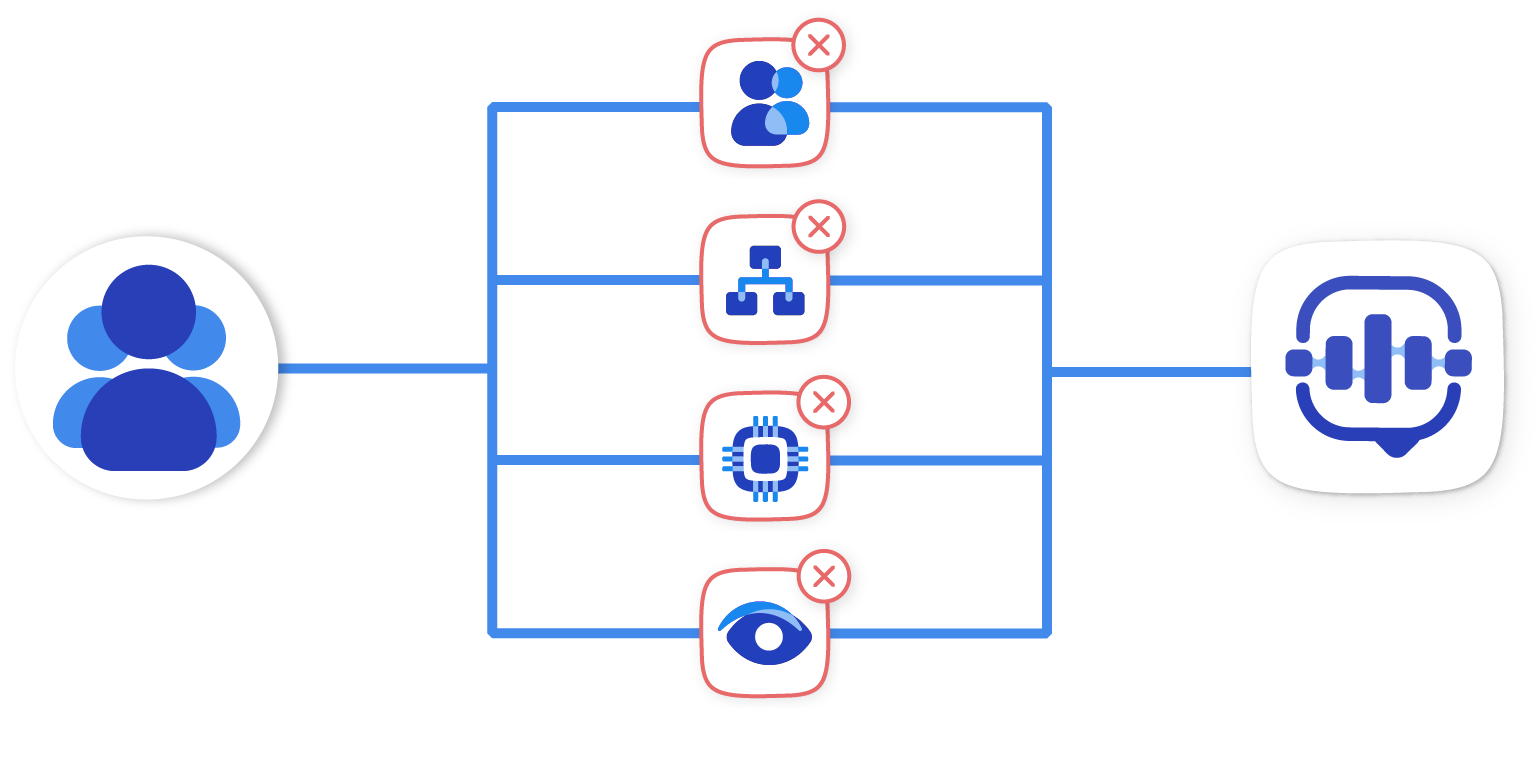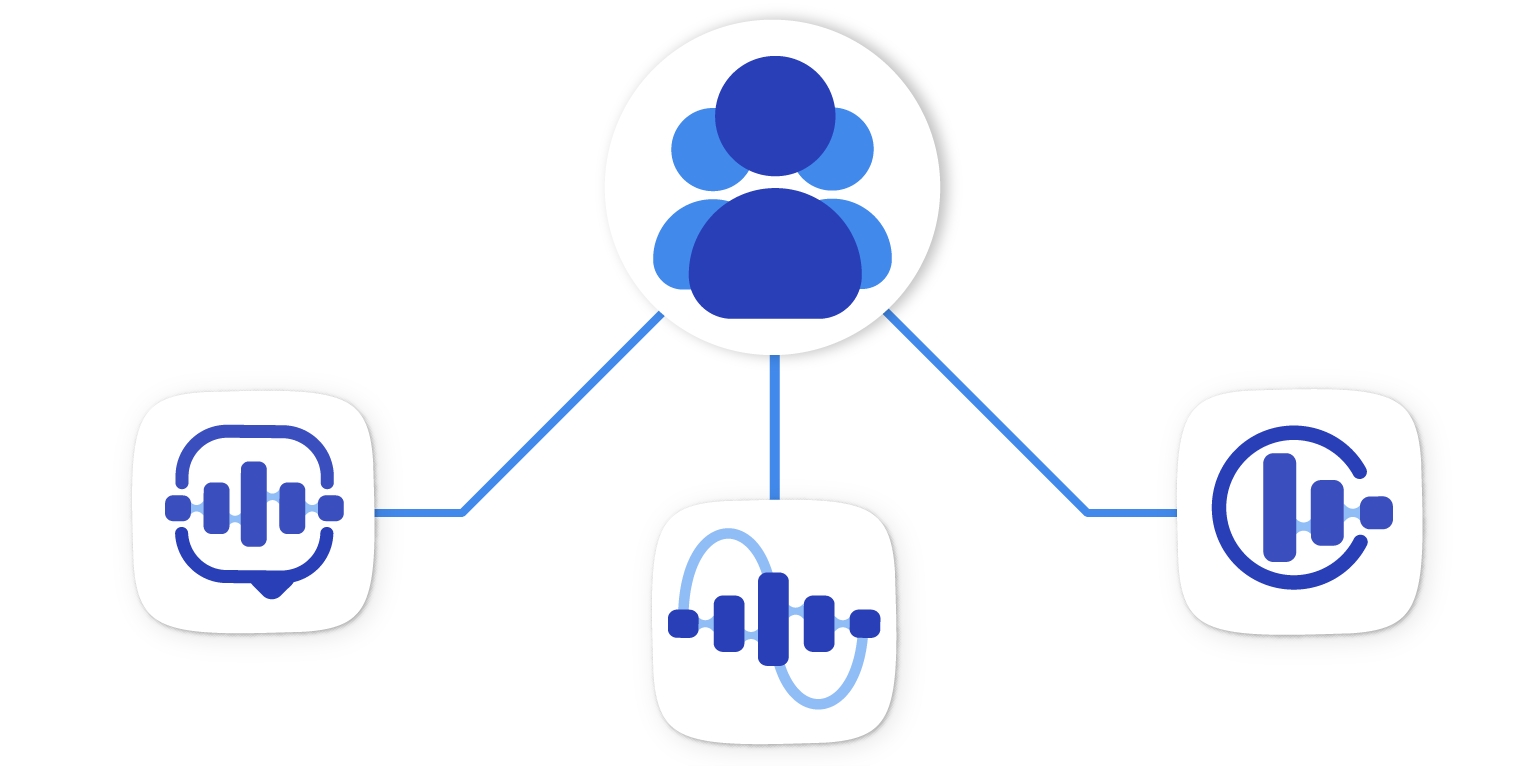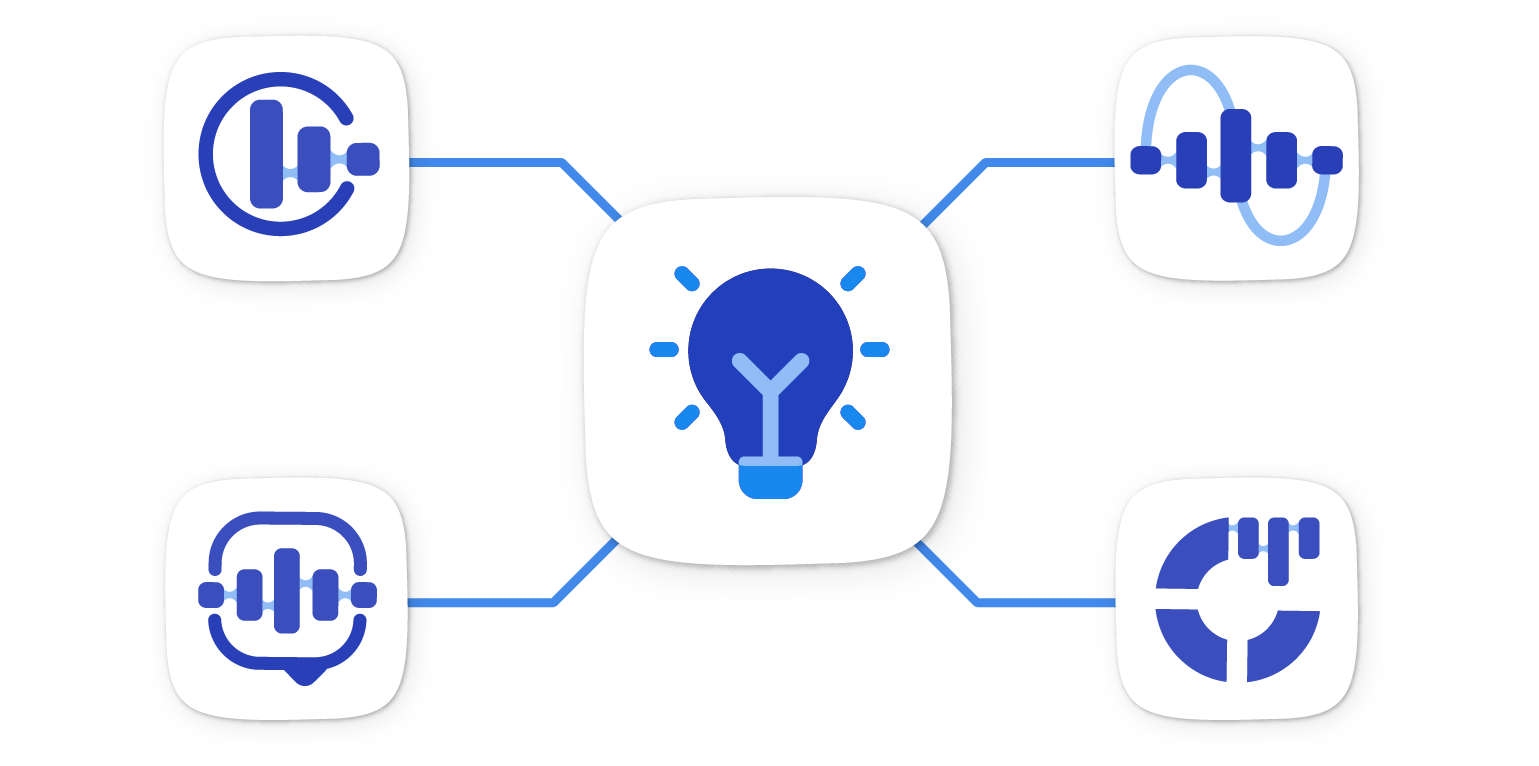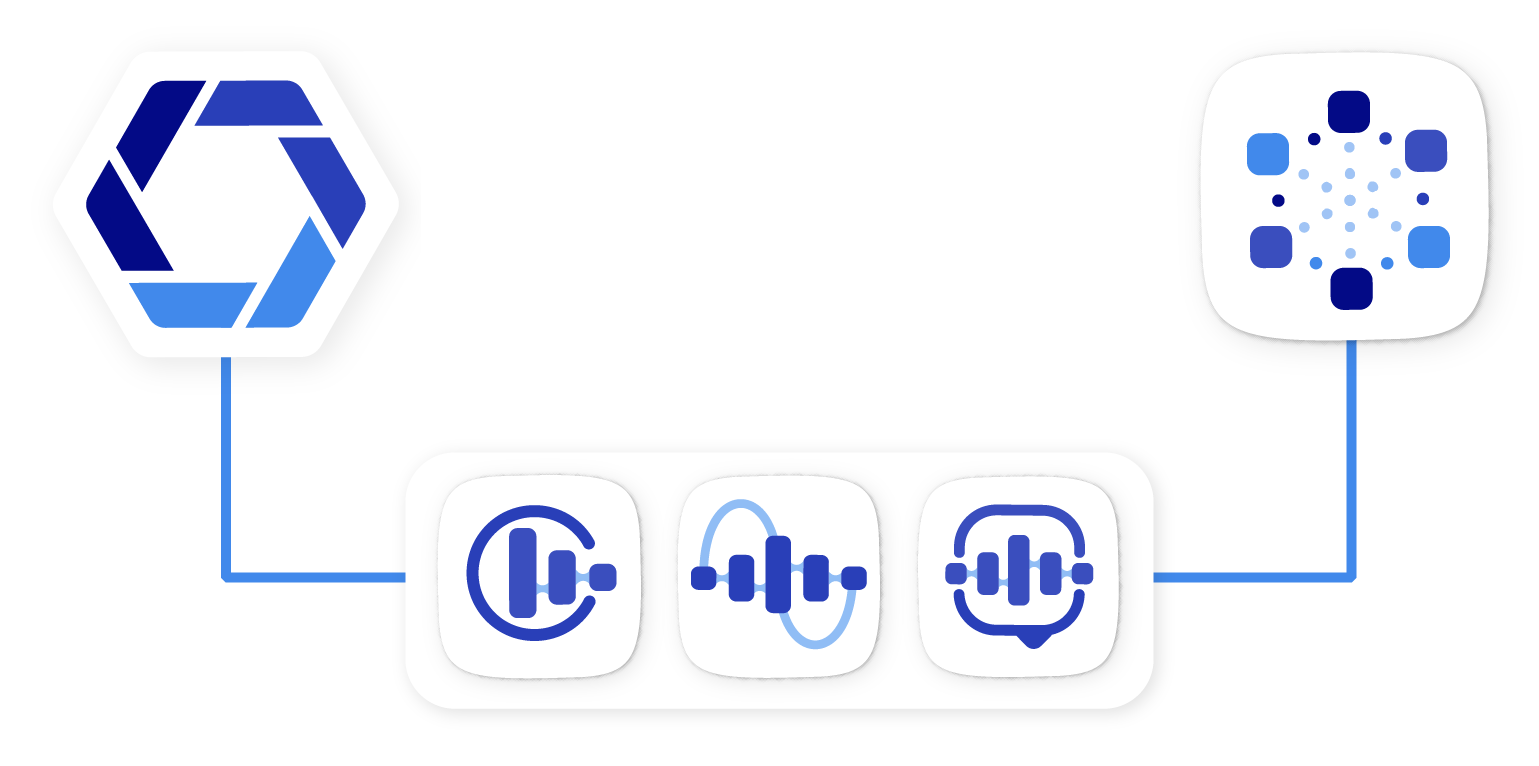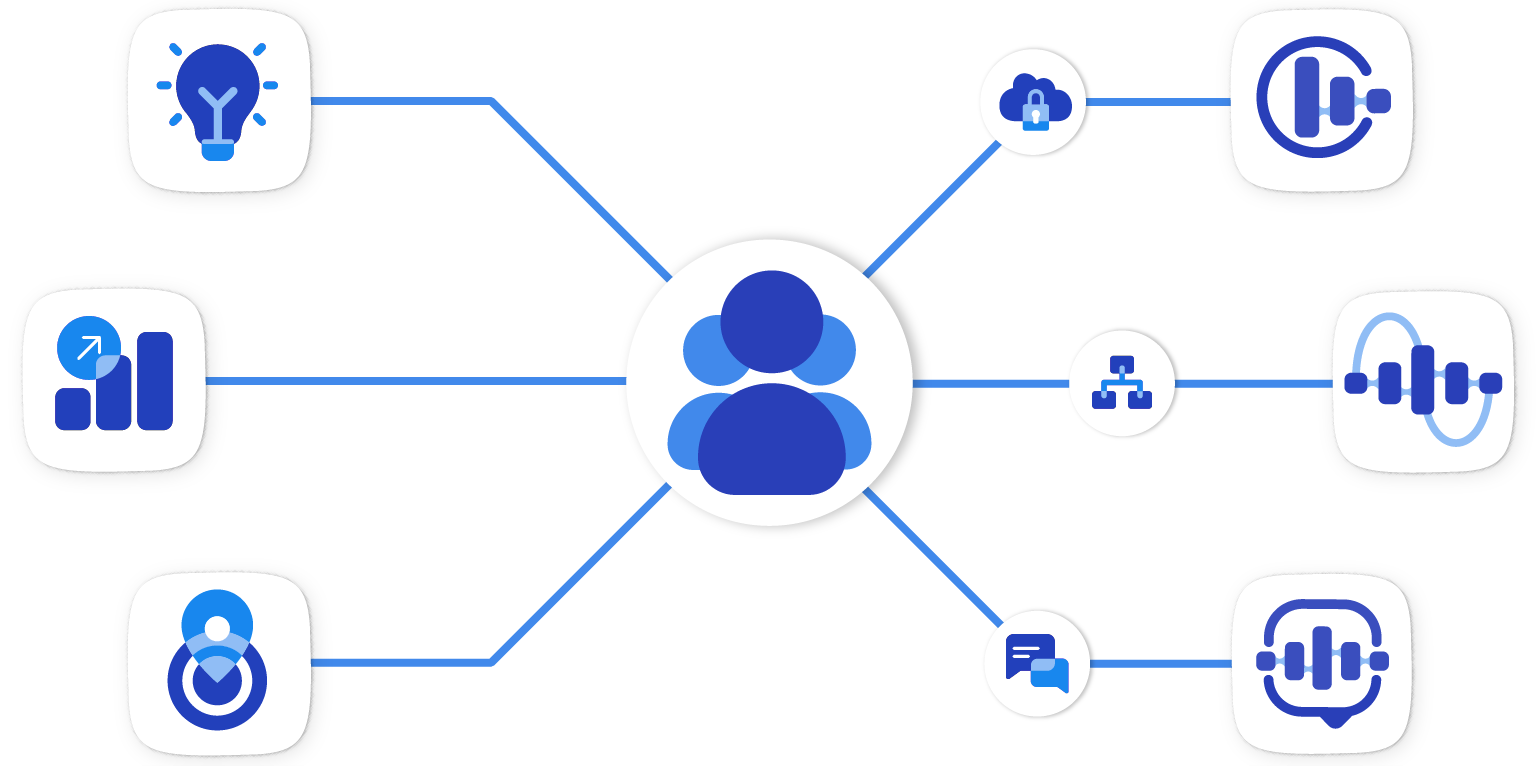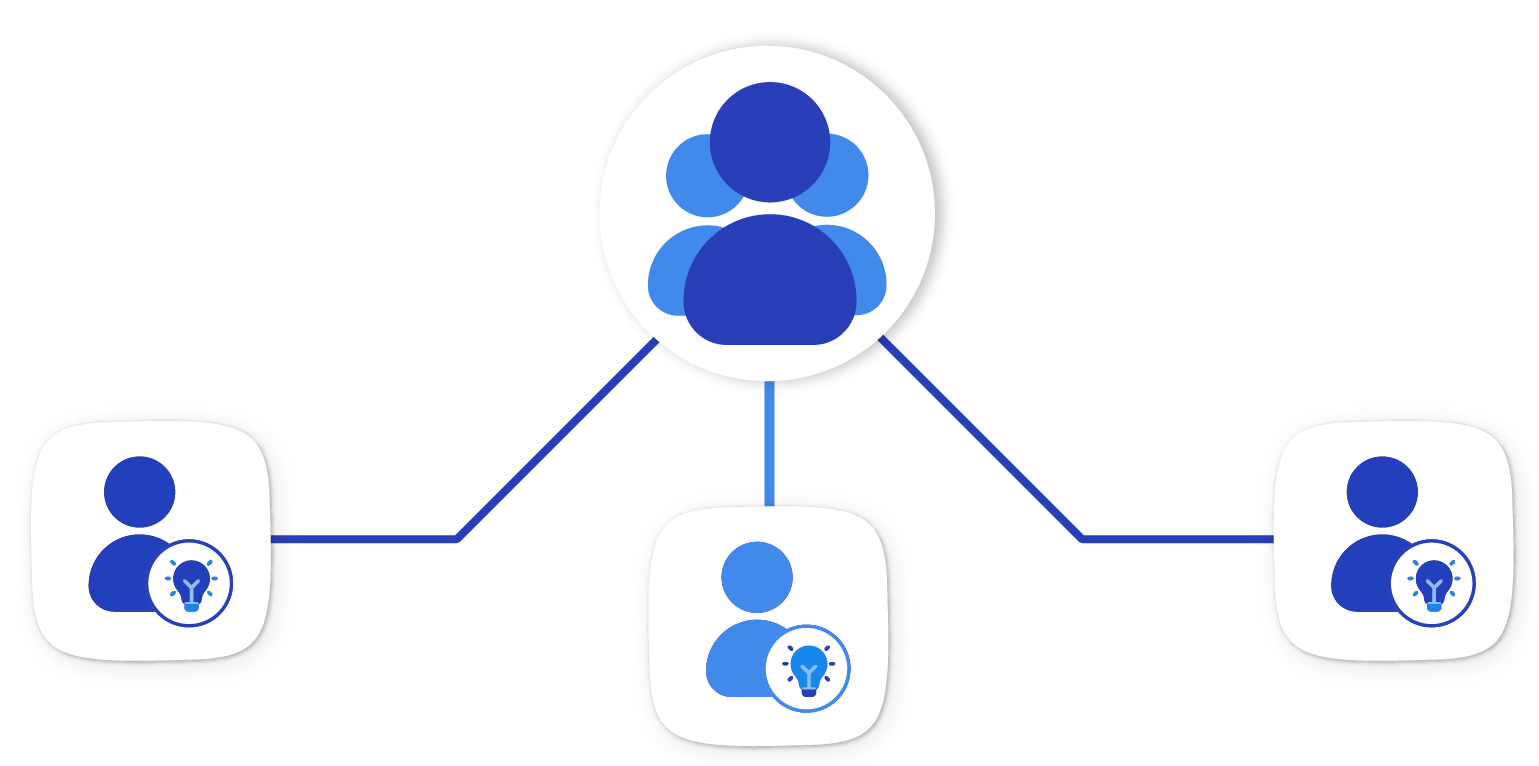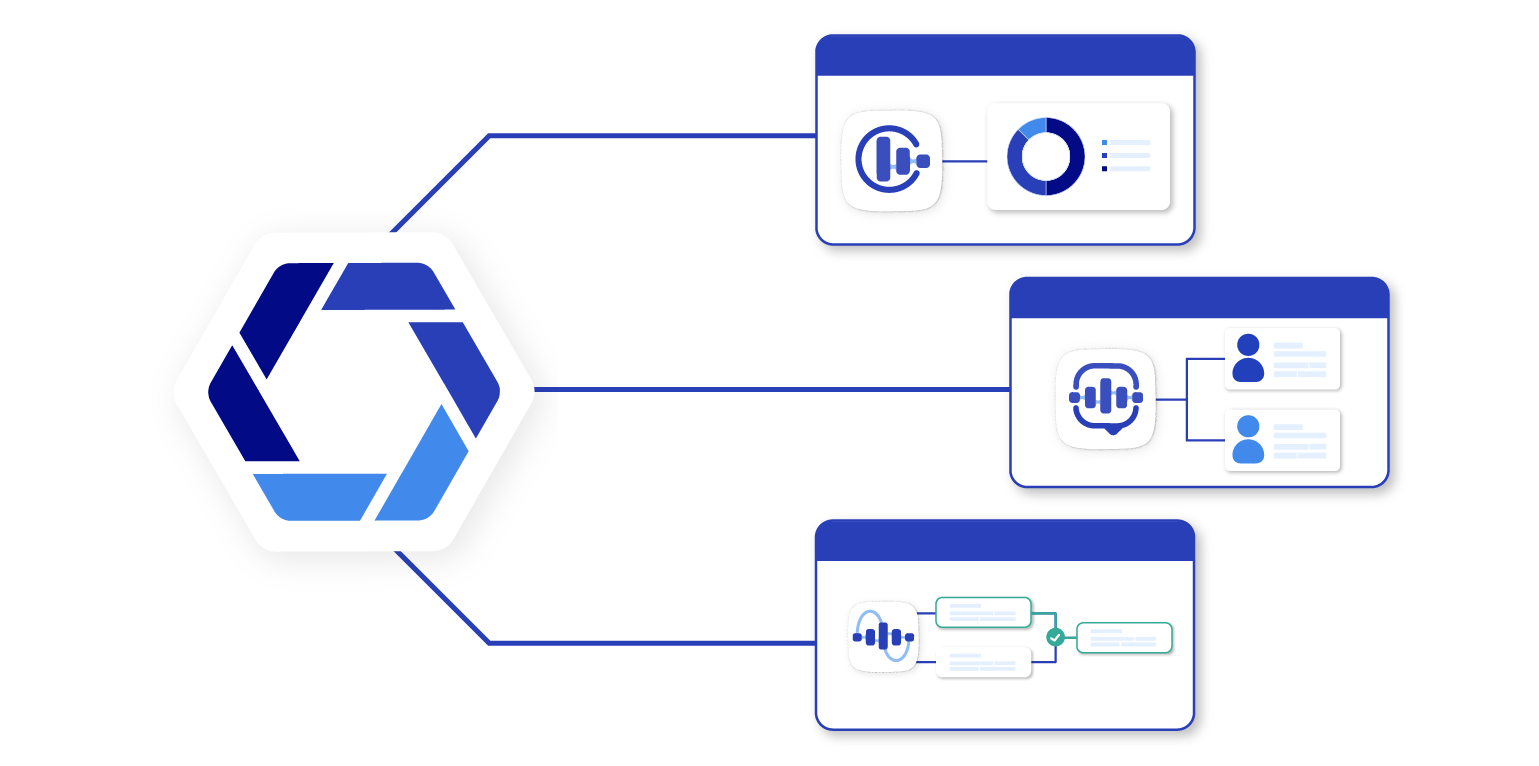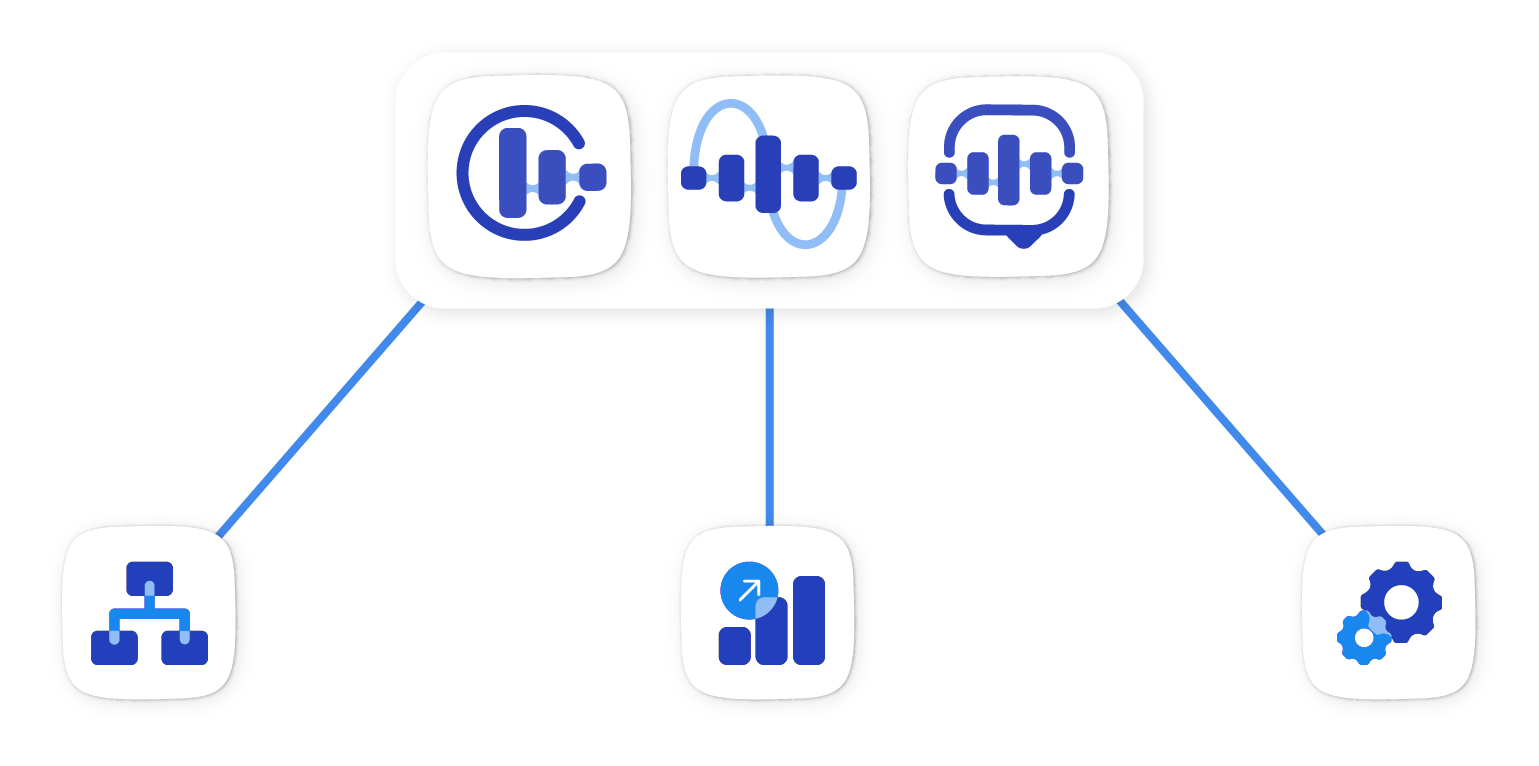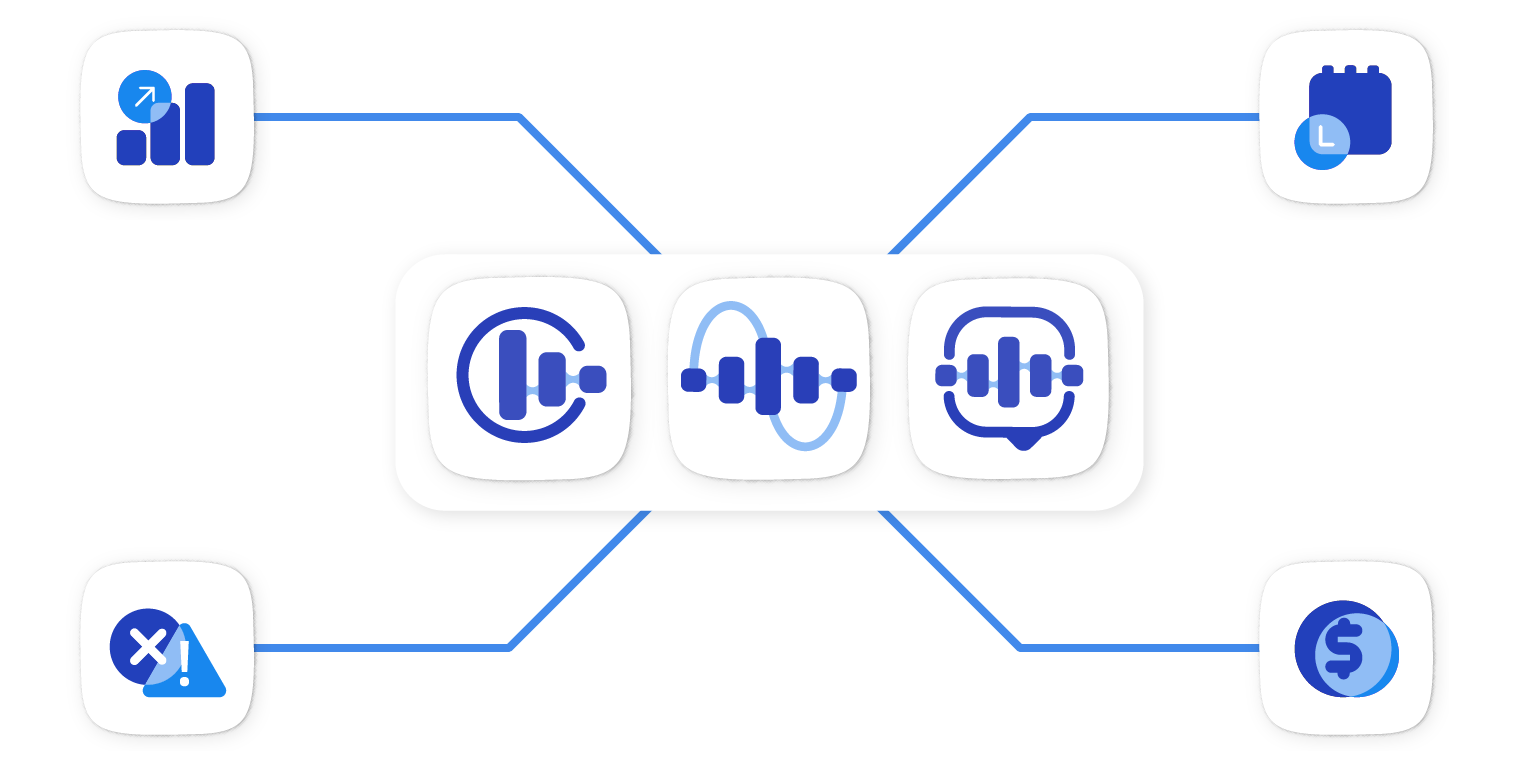Enterprise robotic process automation (RPA) is revolutionizing large businesses all over the world. RPA simulates human behavior across repetitive tasks, which is a game-changer for most organizations, driving efficiency and productivity to new heights.
But RPA isn’t just a tool for automation—it’s also the cornerstone of digital transformation at the enterprise scale. That’s where enterprise RPA comes in.
Enterprise RPA takes the concept of traditional RPA and expands it, incorporating larger, more complex processes that span multiple departments or even whole organizations. It’s about harnessing the power of RPA and tailoring it to the unique needs and goals of an enterprise, from improving operations to enhancing customer experiences and more.
In this comprehensive article, we’ll delve right into the world of enterprise RPA, its benefits, potential, and how it differs from traditional RPA. We’ll explore its applications in various industries, delve into the characteristics of popular enterprise RPA platforms, and guide you through implementing it in your organization.
We’ll also look into the future, examining emerging trends and how enterprise RPA is shaping the business landscape.
With a clear understanding of enterprise RPA, you’ll be well-equipped to evaluate its relevance for your organization and how to leverage it to drive business transformation.
Understanding Enterprise RPA: An Overview
Robotic process automation, or enterprise RPA, is a transformative technology that allows businesses to automate complex, large-scale operations and workflows at the enterprise level. This innovative technology helps organizations to enhance productivity, increase efficiency, and reduce operational costs.
Enterprise RPA builds on the concept of traditional RPA but differs significantly in terms of scalability, resilience, and governance. While traditional RPA focuses on automating individual tasks and small-scale processes, enterprise RPA is designed to automate processes across the entire organization.
Defining Enterprise RPA and Its Functions
Enterprise robotic process automation is a strategic approach to automation that aims to integrate and scale automation efforts across an entire organization. It uses software bots capable of mimicking human actions to perform various tasks. These bots can interact with any application or system just like a human user.
The functions of enterprise RPA include:
- Automating repetitive and mundane tasks, freeing up employees to focus on more strategic and value-adding tasks
- Bridging the gap between various enterprise systems, facilitating seamless information exchange, and enhancing operational efficiency
- Enhancing decision-making by providing real-time analytics and insights
- Reducing errors and improving the quality of work by ensuring that tasks are done consistently
Distinguishing Enterprise RPA from Traditional RPA
Although both traditional RPA and enterprise RPA are built on the same basic principle of automating tasks, there are notable differences.
Scalability
While traditional RPA is suitable for automating individual tasks or small-scale processes, enterprise RPA is designed to scale and manage a large number of bots across the entire organization.
Integration
Enterprise RPA offers more robust integration capabilities. It can connect disparate enterprise systems and applications, facilitating better data flow and collaboration.
Governance
Enterprise RPA provides better control and governance mechanisms, including advanced analytics, security features, and centralized control of bots.
Resilience
Enterprise RPA bots are more resilient to changes in the IT environment. They can quickly adapt to changes in interfaces or process flows, reducing downtime.
Thus, while traditional RPA can improve task-level productivity, enterprise RPA is the key to achieving large-scale, organization-wide digital transformation.
The Benefits of Enterprise RPA
Enterprise robotic process automation has emerged as a game changer in the business world.
As an advanced technology that automates repetitive tasks and streamlines complex workflows, it offers numerous benefits that contribute to operational efficiency, cost savings, and error reduction.
Enhanced Operational Efficiency
Enterprise robotic process automation significantly boosts operational efficiency in organizations. It automates high-volume repetitive tasks previously performed by humans, freeing employees to focus on higher-value tasks that require human intelligence, creativity, and judgment.
Additionally, enterprise RPA enables businesses to operate 24/7 without interruptions, as bots can work round the clock without breaks or downtime. This uninterrupted workflow allows organizations to achieve faster turnaround times and deliver better customer service.
Cost Savings and Error Reduction
Another significant benefit of enterprise robotic process automation is its potential for cost savings. By automating tasks, businesses can reduce the hours employees spend on repetitive tasks, resulting in lower labor costs. Moreover, the investment in robotic process automation can often be recouped quickly due to these savings, leading to a positive return on investment.
Along with cost savings, implementing enterprise RPA can greatly reduce errors. Manual processes are prone to mistakes, but bots can perform tasks with high precision and ensure data accuracy and consistency. This reduction in errors can further save costs associated with error rectification and improve the overall quality of work.
Future Trends and Developments in Enterprise RPA
The future of enterprise robotic process automation is poised for exciting advancements.
With the integration of artificial intelligence (AI) and machine learning (ML), robotic process automation is evolving into intelligent automation. This combination can handle more complex tasks and make informed decisions based on patterns and insights.
Another significant trend is the increasing use of cloud-based RPA solutions. This trend offers increased scalability and flexibility, allowing businesses to quickly scale up or down their automation efforts based on demand.
Moreover, there’s a growing emphasis on the democratization of RPA. It involves making RPA tools more user-friendly so that even non-technical employees can design and deploy bots, fostering a culture of citizen developers.
Thus, enterprise RPA offers immense benefits and holds substantial potential for the future. Automating tasks, reducing errors, and saving costs, enables businesses to become more efficient, agile, and competitive.
Real-World Applications of Enterprise RPA
Enterprise robotic process automation has been making waves across various industries, transforming how businesses operate and compete. By streamlining processes, reducing costs, and enhancing customer experiences, this technology has become an indispensable tool in the modern business world.
Here are a few companies across various industries effectively utilizing enterprise RPA:
Healthcare – Cleveland Clinic
Cleveland Clinic has used robotic process automation to automate and streamline its patient appointment scheduling and billing processes, which were once manual and time-consuming tasks. Its implementation has improved the efficiency and accuracy of these processes, reduced the administrative burden on the staff, and enhanced patient satisfaction.
Finance – American Express
American Express has used robotic process automation for transaction processing and fraud detection. The use of RPA has not only increased its processing speed but also reduced errors, resulting in a safer and smoother experience for its customers.
Retail – Walmart
Walmart has adopted robotic process automation for various tasks, including inventory management and sales reporting. This has allowed the retail giant to manage its vast inventory more efficiently, generate accurate sales reports in real-time, and improve overall operational efficiency.
Telecommunications – AT&T
AT&T has used robotic process automation to automate its customer service operations, enabling quicker resolution of customer issues and freeing human agents to focus on more complex customer interactions. This has led to improved customer satisfaction and operational efficiency.
Logistics – DHL
DHL has used robotic process automation to automate several tasks in the supply chain, including shipment scheduling and tracking, which were once manual and prone to errors. The use of RPA has increased the speed and accuracy of these tasks, resulting in more efficient operations and improved customer service.
Manufacturing – General Electric
General Electric has implemented robotic process automation to automate repetitive tasks in its production line, such as quality checks and data entry. Automation has improved its production speed, reduced errors, and freed workers to focus on more skilled tasks.
These examples illustrate how enterprise robotic process automation can bring substantial benefits across various industries, improving operational efficiency, reducing costs, and enhancing customer service.
The Potential of Enterprise RPA in Other Business Sectors
The transformative potential of enterprise robotic automation is not limited to healthcare, finance, or retail industries. In fact, its sphere of influence extends across a spectrum of sectors, each with a unique set of challenges and demands.
For instance, in the field of education, enterprise RPA can automate and streamline administrative tasks such as student enrolment, grade processing, and scheduling. This optimizes resources, reduces administrative burdens, and allows educators to focus more on teaching and student interaction.
In the real estate sector, enterprise robotic automation can enhance efficiency by automating a host of property management tasks. These could range from routine tenant communications to more complex processes like managing lease agreements and maintenance requests.
This level of automation not only improves operational efficiency but also allows real estate professionals to devote more time to strategic tasks such as market analysis and property acquisition.
Hospitality, an industry built around exceptional customer service, can also significantly benefit from enterprise RPA. Automation of reservations, customer queries, and feedback collection can greatly enhance customer experience and drive customer loyalty.
The future of enterprise robotic process automation looks promising as RPA technologies evolve and become more intelligent. They are expected to handle even more complex tasks, further pushing the boundaries of automation.
Industries that adapt and integrate these advanced RPA solutions will find themselves at an advantage, improving efficiency, accuracy, and cost-effectiveness. Thus, enterprise RPA is set to become an indispensable part of business operations across a multitude of industries and will change how businesses operate and compete.
Exploring Enterprise RPA Platforms
As we delve deeper into enterprise robotic process automation, it is crucial to understand the platforms that drive this technology.
This section will shed light on the key features, capabilities, and variations of these platforms. We’ll analyze how they underpin the successful implementation of RPA solutions at the enterprise level, discuss their benefits, and guide you through selecting the most suitable platform for your organization.
What Are Enterprise RPA Platforms?
Enterprise RPA platforms are an evolution of traditional RPA tools.
While traditional robotic process automation focuses on automating simple, repetitive tasks, enterprise RPA platforms take a holistic approach to automation. They are designed to handle complex processes that span across various departments and require integration with multiple systems.
This ensures that automation is applied strategically across the organization, leading to enterprise-wide improvements in efficiency, accuracy, and productivity.
Key Features of Enterprise RPA Platforms
Enterprise RPA platforms typically include a suite of tools for developing, testing, and deploying software robots or “bots.” These tools often include a user-friendly visual interface for designing automation workflows, libraries of pre-built actions or components, debugging tools, and more.
Key features of enterprise robotic process automation platforms usually include:
Scalability
Scalability is important in an enterprise RPA platform because it supports growth and change. With scalability, an organization can start small, automating a few processes and then expanding gradually as the benefits become apparent.
The ability to scale also accommodates fluctuations in demand, allowing for the addition or reduction of bots as workload levels change. A scalable RPA platform can support high-volume, high-frequency tasks without hampering performance, ensuring consistent business operations.
Security and Governance
In an era where data breaches are rampant, security is of utmost importance. Enterprise RPA platforms need to have strong security measures in place, including role-based access control, which ensures that only authorized personnel can create, modify, or deploy bots.
Audit trails are also important; they record all actions taken by bots and users for accountability and transparency. Encryption, meanwhile, protects sensitive data in transit and at rest. Governance features help maintain control over the RPA implementation, defining who does what and ensuring compliance with internal policies and external regulations.
Integration Capabilities
Enterprise RPA platforms must work harmoniously with existing business applications and systems, from legacy software to modern cloud-based applications. This integration enables bots to perform tasks across multiple systems as human workers do.
Seamless integration reduces the need for extensive custom coding and makes automation easier to implement and more efficient, improving the return on investment.
Centralized Management
A centralized management console is pivotal for coordinating and overseeing all RPA activities across an organization. This console should provide an overview of bot operations, such as what tasks bots are performing, their schedules, their performance metrics, and any errors or exceptions they encounter.
This centralization allows for real-time monitoring and quick responses to issues, maximizing the uptime and productivity of the bots.
Analytics and Reporting
Knowing the impact of your RPA efforts is critical for justifying investment and planning future automation initiatives. Enterprise RPA platforms should have built-in analytics and reporting tools that track and measure the performance of bots.
This could include metrics like hours saved, reduction in errors, cost savings, or any other business-specific KPIs. These insights help businesses understand the value they’re getting from RPA, identify areas for improvement, and showcase the ROI to stakeholders.
Each of these features plays a vital role in successfully deploying robotic process automation at an enterprise level. While specific requirements vary from business to business, these core features are essential for any organization looking to leverage the power of robotic process automation.
Benefits of Enterprise RPA Platforms
Embracing enterprise RPA platforms can usher in a host of benefits that revolutionize how a business operates. From increasing operational efficiency to fostering enhanced decision-making, these platforms offer transformative potential.
Improved Efficiency
One of the primary advantages of enterprise RPA platforms is their ability to improve operational efficiency. They do this by automating repetitive, mundane tasks that otherwise consume significant human hours. When such tasks are automated, it not only speeds up the process but also eliminates the possibility of human error, ensuring higher accuracy.
Furthermore, it frees employees to focus on more strategic, intellectually challenging tasks—the kind of work that humans excel at and that machines can’t replicate. This leads to increased job satisfaction and employee productivity.
Cost Savings
The cost savings from implementing enterprise RPA platforms are substantial. These savings arise primarily from the increased efficiency and reduced errors that automation brings. Over time, the savings from each automated process add up, significantly reducing operational costs.
For example, automating a process that five full-time employees previously handled might mean those employees can now be reassigned to more strategic tasks, thus saving the cost of hiring new employees for those roles.
Enhanced Agility
Enterprise RPA platforms provide businesses with unparalleled agility. Because these platforms can rapidly deploy, modify, and scale bots per changing business needs, they allow companies to respond quickly to new opportunities or challenges.
This is particularly useful in today’s rapidly changing business environment, where the ability to adapt quickly can provide a competitive advantage.
Better Decision-Making
Enterprise RPA platforms don’t just automate processes; they also gather valuable data about those processes. This can provide businesses with insights they might not have had otherwise.
For instance, an RPA bot can collect data about the time it takes to process an invoice, the number of invoices processed daily, and the common errors that occur. By analyzing this data, businesses can identify bottlenecks, inefficiencies, and opportunities for further automation, leading to better decision-making and strategic planning.
Why Businesses Need to Consider Enterprise RPA Platforms
Given the competitive business landscape, organizations are under constant pressure to innovate and optimize their operations to stay competitive. The need to continually evolve, combined with an increasing emphasis on operational efficiency, has shifted the focus toward automation and digital transformation.
Enterprise RPA platforms provide an effective means to navigate this complex business landscape. They offer a comprehensive solution for large-scale process automation, harnessing the power of bots to perform several tasks that are repetitive, time-consuming, or prone to human error.
These can range from simple tasks, such as data entry and report generation, to more complex operations involving multiple systems and intricate decision-making.
Furthermore, enterprise RPA platforms are not just about meeting the needs of today but also preparing for the future. As artificial intelligence and machine learning continue to evolve, we can expect them to play a larger role in automation.
Enterprise RPA platforms that integrate AI and ML capabilities will enable businesses to further enhance their operations, make more informed decisions, and stay ahead of the competition.
Thus, by adopting an enterprise RPA platform, businesses are making a strategic investment toward growth, competitiveness, and future readiness.
Choosing the Right Enterprise RPA Platform
Finding the right enterprise robotic process automation platform can be a complex process because of the myriad of options available in the market. However, certain factors such as below can guide you toward a solution that best meets your business needs.
Ease of Use
Consider how user-friendly the platform is. Can it be used by non-technical staff, or does it require advanced coding skills? An intuitive interface can greatly enhance the ease of implementation and adoption.
Scalability
The platform should be able to accommodate your growth. As your RPA needs to evolve, the platform should easily scale to handle the increased workload without compromising performance.
Integration Capabilities
Assess whether the platform can easily integrate with your existing systems and software. This is crucial to achieve seamless automation across different processes.
Security and Compliance
The platform should adhere to the highest security standards and help your organization comply with relevant regulations.
Vendor Support
Good vendor support is vital, particularly during the initial stages of implementation. Consider the vendor’s reputation, their response times, and the quality of their customer support.
Selecting the right enterprise RPA platform demands a comprehensive understanding of your organization’s unique needs. It requires a meticulous assessment of each platform’s features, focusing on scalability, integration capabilities, and ease of use. Only through such thorough consideration can the best fit for your business be found.
Success Stories: Enterprise RPA Platforms in Action
Successful enterprise RPA implementations provide valuable insights for businesses embarking on their automation journey. Here are some real-world examples of businesses leveraging enterprise RPA platforms to boost efficiency and productivity:
The Healthcare Sector Embraces UiPath
One notable example is a leading healthcare institution that adopted UiPath’s enterprise RPA platform to automate patient scheduling, billing, and data management. The results were impressive. Operational efficiency improved with faster, error-free processes.
The automation allowed staff to focus on patient care, enhancing the overall service quality. RPA can drastically cut down administrative workload in healthcare, paving the way for better patient care.
Blue Prism Revolutionizes Banking
In the banking sector, a major financial institution harnessed Blue Prism’s enterprise RPA platform to automate loan processing, compliance reporting, and fraud detection tasks. The platform’s robust control features ensured strict compliance with industry regulations.
As a result, the institution realized significant risk reduction, increased accuracy, and enhanced customer service. In heavily regulated industries like banking, robotic process automation not only streamlines operations but also helps maintain compliance and control risks.
Retail Sector Succeeds with Automation Anywhere
A prominent retail chain implemented Automation Anywhere’s enterprise RPA platform to automate inventory management, sales reporting, and customer service tasks. The result was a transformed customer experience with efficient service and accurate, real-time inventory information.
The AI capabilities of the platform also helped predict sales trends, enabling proactive inventory management. RPA can revolutionize customer experience in retail, ensuring product availability and delivering personalized service.
Kryon Optimizes Processes in Logistics
In the logistics industry, a large courier company used Kryon’s Process Discovery feature to identify high-impact automation opportunities. It automated several routine tasks like shipment scheduling, tracking, and reporting, leading to a remarkable increase in efficiency and a reduction in human error.
With RPA, logistics companies can automate routine tasks, improving accuracy and speed, and ultimately increasing customer satisfaction.
These success stories underscore the potential of enterprise RPA platforms in diverse sectors. The ability to automate complex processes, reduce errors, improve efficiency, and enhance customer satisfaction demonstrates the power and versatility of RPA when implemented strategically.
Implementing Enterprise RPA in Your Organization
Deploying an enterprise RPA solution isn’t just about choosing the right platform. It involves several critical steps that can shape the success of your automation initiative.
In this section, we’ll walk through a strategic approach to implementing enterprise RPA, from assessing your processes for automation potential to managing change within your organization. We’ll explore the best practices for setting up, launching, and maintaining your enterprise RPA solution to achieve operational efficiency and productivity gains.
Preparing for the Transition to Enterprise RPA
Transitioning to enterprise robotic process automation is a significant shift that demands careful planning and preparation. Dive into these essential steps to prepare your organization for a successful enterprise RPA implementation.
Securing Stakeholder Buy-in
Without the backing of key stakeholders, RPA initiatives can flounder. It’s vital to present a clear business case that details the expected benefits and ROI of the RPA implementation. Garnering support from top management down to the operational level can ensure a smooth transition.
Setting Realistic Goals
While robotic process automation holds tremendous potential, setting realistic expectations is important. Establishing achievable goals helps manage expectations and can pave the way for long-term success. Start with smaller, manageable projects before moving on to more complex tasks.
Process Evaluation
Not all processes are suitable for automation. Hence, identifying the right processes to automate is crucial. Look for processes that are repetitive, rule-based, prone to human error, or time-consuming. This is where tools like process mining or process discovery can be invaluable.
Readiness Assessment
Conduct a readiness assessment to determine if your organization is prepared for RPA implementation. This involves evaluating your IT infrastructure, data security measures, and workforce readiness. Any gaps identified should be addressed before initiating the RPA deployment.
By ensuring stakeholder buy-in, setting realistic goals, performing rigorous process evaluation, and conducting a thorough readiness assessment, your organization can better prepare for a smooth and effective transition to enterprise RPA.
The Implementation Process of Enterprise RPA
Implementing enterprise robotic process automation is a multifaceted process that involves several stakeholders. A systematic, well-planned approach can ensure a successful rollout.
Here’s a step-by-step guide to implementing enterprise RPA in your organization:
Assemble the RPA Team
The first step is to assemble your RPA team, which may include roles such as an RPA sponsor (typically a high-ranking executive), RPA project manager, business analyst, RPA developer, and IT support. Each role has specific responsibilities in the implementation process.
Define the Scope
Outline the processes to be automated and the expected outcomes. A clear articulation of the project scope can avoid misunderstandings and scope creep.
Design the RPA Solution
With the scope defined, the business analyst and RPA developer can start designing the RPA solution. This involves mapping out the process flow, identifying decision points, and specifying the actions the bots will take.
Develop and Test the Bots
The RPA developer now codes the bots according to the design. Rigorous testing is necessary to ensure the bots work as expected and fix bugs.
Deploy the Bots
With testing complete, the bots are ready to be deployed. Initial deployment should be in a controlled environment, with comprehensive monitoring to address any issues that arise.
Monitor and Optimize
Post-deployment, bots should be continuously monitored to ensure they are performing as expected. Any issues or inefficiencies should be addressed, and the bots should be optimized as necessary.
Post-Implementation Considerations
Successful RPA implementation doesn’t stop at deployment. Post-implementation considerations are key to maximizing the benefits of your RPA initiative.
Training
Ensure all stakeholders understand how to work with the new RPA system. Training should cover both technical aspects for developers and operational aspects for end-users.
Continuous Improvement
Robotic process automation is not a “set and forget” solution. Constant monitoring and regular updates are necessary to adapt to evolving business needs and processes.
Scaling
As your organization becomes more comfortable with robotic process automation, look for additional automation opportunities. A successful RPA initiative can be scaled across different departments or processes for maximum impact.
By carefully planning and executing the RPA implementation process and considering post-implementation factors like training and continuous improvement, your organization can maximize the potential of enterprise robotic process automation.
Overcoming Challenges in Enterprise RPA Implementation
Implementing enterprise robotic process automation comes with its own set of challenges. Understanding these obstacles can prepare your organization for a smoother transition.
Resistance to Change
Implementing a new technology like enterprise RPA can often be met with resistance from employees. This resistance can stem from fears of job loss or reluctance to shift from established processes.
Addressing these concerns by engaging in open dialogue is crucial, highlighting how RPA can augment human work rather than replace it. Providing reskilling and upskilling opportunities can also help employees adapt to the new workflow, further easing their concerns.
Process Complexity
Some business processes are intricate, with multiple variables that might complicate automation. It’s essential to identify these complexities in the early stages of RPA deployment.
Start by automating simple, high-volume tasks to provide immediate returns and showcase the effectiveness of robotic process automation. As your team gains more experience and confidence, you can gradually move to more complex tasks.
Lack of IT Infrastructure
Adequate IT infrastructure is a prerequisite for successful RPA deployment. Some organizations may find their current infrastructure insufficient or outdated, which could lead to increased costs for upgrades.
In such cases, cloud-based RPA solutions might be an effective alternative as they require minimal changes to the existing infrastructure and can be scaled according to business needs.
Inadequate Governance
RPA can potentially lead to compliance issues if not properly monitored and controlled. Establishing a robust governance framework is crucial. This framework should define roles and responsibilities, set guidelines for bot usage, and incorporate mechanisms to track and audit bot activities.
Importance of Ongoing Support and Maintenance in Enterprise RPA Implementation
Sustaining the success of enterprise robotic process automation requires more than just successful implementation.
Continuous Monitoring
Post-implementation, it’s critical to continuously monitor the performance of your RPA system. Early detection of any issues or inefficiencies allows for quick remediation. Monitoring can also identify opportunities for improvement or highlight processes that might benefit from further automation.
Regular Updates
Business processes and needs evolve, and your RPA solution should adapt to these changes. Regular updates ensure your bots stay current and continue to deliver optimal results. These updates should also align with any changes in regulatory requirements to maintain compliance.
Technical Support
As with any technology, robotic process automation requires regular maintenance and technical support to function efficiently. Having a dedicated IT team or reliable vendor support can ensure any technical issues are addressed promptly, minimizing downtime and maintaining productivity.
By understanding and proactively addressing these challenges and emphasizing ongoing support and maintenance, your organization can truly harness the benefits of enterprise robotic process automation.
The Future of RPA at Enterprise Scale
As we turn our gaze to the future, it is essential to understand what the horizon holds for RPA at an enterprise scale.
This section will navigate the promising trajectories of robotic process automation, focusing on how technological advancements and emerging trends will further shape its influence in the business landscape. From intelligent automation to wider acceptance and adoption, we’ll delve into the dynamics poised to elevate enterprise RPA’s role in transforming businesses around the globe.
Emerging Trends in Enterprise RPA
As we stand on the brink of a new digital transformation era, enterprise robotic process automation continues to evolve, pushing boundaries and redefining possibilities.
Several emerging trends are shaping the future of enterprise robotic process automation, illuminating the innovative ways this technology is being leveraged and adapted to fit the ever-changing business landscape. Let’s explore some.
Hyperautomation
A trend beyond conventional automation, hyperautomation involves the marriage of robotic process automation with other emerging technologies like machine learning, artificial intelligence, process mining, and analytics.
The goal is to create an environment where almost any business process can be automated. This results in the creation of a digital twin of the organization, enabling real-time visualization and analysis of business processes and performance.
Attended and Unattended Automation
There’s a growing trend in using both attended and unattended robotic process automation. Attended RPA works hand in hand with human intervention, aiding employees in tasks and providing assistance as needed.
On the other hand, unattended RPA works independently, performing tasks around the clock without human input. Using both types of automation in sync can lead to a significant boost in productivity and efficiency.
RPA as a Service (RPAaaS)
The concept of RPAaaS is revolutionizing how businesses view and use robotic process automation. Instead of investing in developing and maintaining an RPA system, businesses can simply subscribe to RPAaaS. This model makes RPA technology more accessible to small and medium-sized businesses by reducing upfront costs and infrastructure needs.
Potential Impact of AI and Machine Learning on Enterprise RPA
As we delve into the future of enterprise robotic process automation, it’s impossible to ignore the pivotal role of two key technological advancements—artificial intelligence (AI) and machine learning (ML).
These cutting-edge technologies will revolutionize robotic process automation and transform the automation landscape by creating intelligent, adaptable bots capable of tackling increasingly complex tasks.
Intelligent Automation
The intersection of RPA, AI, and ML will pave the way for intelligent automation. It will allow RPA bots to manage unstructured data, understand and learn from past patterns, and make decisions. The ability of bots to learn from experience and adapt their actions accordingly will push the boundaries of what tasks can be automated.
Predictive Analytics
Leveraging machine learning, RPA bots can predict future trends based on historical data patterns. This will give businesses foresight into market trends, consumer behavior, and operational performance, leading to more strategic and informed decision-making.
Natural Language Processing (NLP)
Integrating AI capabilities like NLP with robotic process automation will enhance bots’ understanding and interpretation of human language. This will lead to improved interaction with users and the ability to process and understand unstructured data in emails, customer feedback, and social media comments.
Speculations on the Future of RPA in the Enterprise Context
Without a doubt, enterprise robotic process automation is poised for significant changes that will shape the future of enterprises across the globe. From wider industry adoption and shifting workforce roles to advancements in regulatory frameworks, the landscape of robotic process automation is expected to evolve considerably in the coming years.
Wider Adoption Across Industries
As the potential benefits of RPA become more evident, it’s likely to see increased adoption across various industries, even those traditionally resistant to technological innovation. This will lead to a wider application of RPA solutions, revolutionizing business processes across the board.
Evolving Workforce Roles
With robotic process automation taking over repetitive and mundane tasks, employees will have more time to focus on strategic and creative aspects of their jobs. This shift could redefine job roles and skill requirements, emphasizing problem-solving, innovation, and strategic thinking.
Advancement in Regulatory Frameworks
As the adoption of robotic process automation increases, regulatory bodies will likely develop comprehensive frameworks to govern its use. These regulations may address key concerns like data security, privacy, and ethical implications of automation, ensuring responsible and secure use of RPA technology.
Enterprise RPA and the Evolving Business Landscape
As the business landscape continues to evolve rapidly, enterprise robotic process automation stands at the forefront of this transformation and plays a critical role in shaping the future of work.
Businesses worldwide are embracing digital transformation, and enterprise robotic process automation is proving to be a significant catalyst. By automating repetitive, rule-based tasks, it allows businesses to reallocate their resources to more strategic and value-adding tasks, enhancing productivity and overall business efficiency.
The advent of enterprise RPA also heralds a new era of work characterized by a symbiotic relationship between human talent and digital labor. This not only augments the capabilities of the workforce but also leads to greater job satisfaction as employees are freed from monotonous tasks and can engage more in creative and critical problem-solving endeavors.
Furthermore, enterprise RPA is instrumental in fostering business agility and resilience, especially in a post-pandemic world where businesses must navigate a myriad of uncertainties and disruptions.
With its ability to scale up or down based on demand, provide round-the-clock operations, and adapt quickly to changing business processes, enterprise RPA enables businesses to respond swiftly and efficiently to changing market dynamics. It also reduces the risk of errors and improves compliance, further enhancing business resilience.
Moreover, the predictive analytics capabilities of intelligent RPA systems allow businesses to anticipate market trends by equipping them with the insights needed to seize new opportunities or mitigate potential risks.
When businesses harness the power of enterprise robotic process automation, businesses can stay ahead of the curve, ensuring not only survival but also sustained growth and competitiveness in the evolving business landscape.
Future Skills and Roles in an Enterprise RPA-Driven Business Environment
Integrating enterprise robotic process automation into the business environment introduces a shift in the skill set requirements and roles in the organization. While enterprise RPA takes over repetitive, time-consuming tasks, it also opens up opportunities for employees to focus on more strategic and cognitively demanding roles.
RPA Developers/Engineers
With the increasing implementation of robotic process automation, there will be a rising demand for RPA developers and engineers who can build, implement, and maintain these automated systems. These individuals will need strong programming skills and a deep understanding of business processes and workflows.
Business Analysts
Business analysts who can identify automation opportunities, map processes, and design RPA solutions will play a crucial role. These professionals will need a mix of business acumen, process improvement skills, and a basic understanding of RPA technologies.
AI and ML Specialists
As RPA evolves to incorporate more AI and ML capabilities, specialists in these areas will be in high demand. They will work to develop intelligent bots that can handle more complex decision-making tasks.
Change Management Specialists
Implementing robotic process automation changes how work is done, impacting employees’ roles and workflows. Specialists in change management will be critical in helping organizations navigate these transitions, addressing concerns, and facilitating training.
Data Analysts and Data Scientists
As RPA systems generate valuable data, there will be a growing need for data analysts and data scientists to analyze this information, extract insights, and inform business strategies.
Compliance and Risk Management Professionals
Given that robotic process automation can significantly enhance compliance and reduce risks by minimizing human error, these professionals will be vital in ensuring that automated processes adhere to regulatory requirements and organizational policies.
Human-Machine Teaming Managers
A new role that could emerge is the human-machine teaming manager. This role would involve optimizing the collaboration between humans and bots, ensuring that both are used effectively and complement each other’s work.
Therefore, while enterprise robotic process automation will automate certain roles, it will also create new ones and enhance existing roles, fostering a more strategic, innovative, and value-adding workforce. Employees will need to upskill and reskill to adapt to this changing environment, and organizations will need to support them in this transition.
Conclusion: Enterprise RPA as a Game Changer
In the ever-evolving business landscape, enterprises constantly seek innovative solutions to enhance efficiency, productivity, and profitability. Enterprise robotic process automation has emerged as a game-changing tool in this quest.
As we’ve discussed throughout this comprehensive article, enterprise RPA offers several benefits, from operational efficiency and cost savings to error reduction and employee productivity enhancement.
The increasing integration of artificial intelligence and machine learning with enterprise RPA offers an exciting glimpse into the future. As these technologies continue to evolve, their potential to drive further automation and transform business operations becomes increasingly apparent.
However, like all technological advancements, successful implementation requires a well-thought-out strategy, the right set of tools, and a commitment to navigate the change. The potential of enterprise RPA is vast, and it is up to each organization to harness its capabilities to the fullest.
Enterprise RPA is rich with potential and ready for exploration. It’s an exciting time for enterprises willing to embrace this technology and set themselves up for a more efficient, productive, and profitable future. Are you ready to join them? The journey to automation and unparalleled efficiency starts with a single step.
Leverage the power of enterprise RPA now with Kizen, a leading enterprise AI and automation company. Experience unprecedented speed and agility in your organization. Get in touch with an expert at Kizen.com.
Frequently Asked Questions About Enterprise RPA
We understand that the world of enterprise robotic process automation might seem complex and overwhelming at first glance.
Thus, we’ve curated and answered some of the most commonly asked questions about enterprise RPA. These will further clarify some of the concepts we’ve discussed throughout this article and help you better understand the nuances of enterprise RPA and its impact on various business processes.
What Is the Role of AI in Enterprise RPA?
Artificial Intelligence (AI) plays a significant role in enterprise robotic process automation by expanding its capabilities beyond rule-based tasks. AI, with its ability to learn from data patterns and make intelligent decisions, can augment enterprise RPA to automate complex processes requiring cognitive abilities.
In enterprise RPA, AI technologies such as machine learning, natural language processing, and computer vision are often used. For instance, machine learning algorithms can help RPA bots to learn from previous data and improve their performance over time.
Natural language processing enables bots to understand and respond to human language, making them capable of tasks such as customer service. Similarly, computer vision allows bots to interpret visual data, enabling them to handle tasks such as document processing more effectively.
This intersection of AI and enterprise RPA is often called intelligent process automation (IPA). With IPA, not only can repetitive tasks be automated, but cognitive tasks like data analysis, decision-making, and even predicting future trends can be automated as well.
Looking forward, the role of AI in enterprise RPA is only expected to grow. As AI technologies continue to evolve and mature, we can anticipate a future where RPA bots can undertake even more complex tasks.
This promises a new era of automation, where intelligent bots could manage end-to-end business processes, make informed decisions based on data, and continuously learn and adapt to changing business environments. This is the exciting future that lies at the intersection of AI and enterprise RPA.
How Does Enterprise RPA Impact Workforce Dynamics?
The implementation of enterprise robotic process automation can have a profound impact on workforce dynamics. Far from rendering human employees obsolete, enterprise RPA often serves as a digital assistant that takes over repetitive and mundane tasks, freeing employees to focus on more strategic, creative, and customer-facing roles.
This shift can lead to increased employee productivity and job satisfaction and can even foster innovation as employees have more time to engage in meaningful work.
That being said, the transition to an enterprise RPA-driven environment may require some employees to reskill or upskill. Certain job roles may change or evolve, and new roles may emerge, particularly those that involve the management, development, and maintenance of RPA systems.
For example, roles such as RPA developers, RPA analysts, or RPA project managers may become more prevalent. Businesses can facilitate this transition by providing relevant training and resources for employees to acquire the necessary skills.
However, managing workforce transition during enterprise RPA implementation is a crucial aspect. Communication plays a key role here. Employees need to be informed about why the company is adopting RPA, how it will impact their roles, and the support available to them during this transition.
This not only helps mitigate fear and resistance but also encourages employees to become active participants in the company’s automation journey. It’s also important to provide ongoing support and training to employees as they navigate their new roles in a more automated environment.
Thus, while enterprise RPA can change workforce dynamics, with proper management and support, these changes can lead to positive outcomes such as improved productivity, enhanced job roles, and a more engaged workforce.
How Does Enterprise RPA Contribute to Digital Transformation Initiatives?
Enterprise robotic process automation is a significant contributor to digital transformation initiatives by enabling businesses to automate routine tasks, streamline business processes, and increase overall operational efficiency.
As part of a broader digital transformation strategy, it helps organizations adapt to the evolving digital landscape by bringing agility and speed to their operations, supporting their transformation objectives.
By automating repetitive tasks, enterprise RPA frees up resources and time that can be used to focus on more strategic areas of the business, speeding up the process of digital transformation. For example, it allows organizations to quickly digitize and process data, which can be crucial for data-driven decision-making, a key aspect of digital transformation.
Moreover, enterprise RPA is often implemented with other digital transformation technologies and is integral to a larger digital ecosystem. For instance, when integrated with AI and ML, RPA can handle more complex tasks, such as processing unstructured data or making predictive analyses, thus expanding the scope of automation.
Furthermore, the compatibility of RPA with existing systems allows for seamless integration and minimizes disruption, which can be a significant advantage in digital transformation efforts.
As businesses continue to evolve and adapt to digital changes, enterprise RPA will continue to play a key role in helping them transform their operations, stay competitive, and deliver enhanced value to their customers.
Therefore, enterprise RPA is not just a standalone tool but a crucial component in orchestrating successful digital transformation initiatives, complementing and enhancing the capabilities of other digital technologies and strategies.
How Is the Success of an Enterprise RPA Implementation Measured?
The success of an enterprise RPA implementation is typically measured using various key performance indicators (KPIs), which provide quantitative ways to assess the efficiency and effectiveness of the automation efforts. These KPIs may include task completion time, error rates, cost savings, and return on investment (ROI).
Task completion time and error rates are operational KPIs that indicate the efficiency of the automated processes. Reduced task completion time and error rates post-implementation indicate successful RPA deployment. On the other hand, cost savings and ROI are financial KPIs that give an insight into the economic benefits derived from implementing RPA.
Continuous monitoring and improvement are crucial in measuring the success of enterprise RPA. Implementing RPA is not a one-time event but a continuous improvement process.
By regularly monitoring the performance of automated processes, businesses can identify areas of improvement and make necessary adjustments to optimize efficiency. This might involve refining the automation rules, expanding the scope of automation, or updating the RPA software.
It is also important to align the KPIs of enterprise RPA with the overall business goals. For instance, if a business aims to improve customer satisfaction, a relevant KPI for RPA could be reducing customer response time with automation. This ensures that the RPA implementation contributes to the strategic objectives of the business.
Ultimately, measuring the success of an enterprise RPA implementation involves a mix of operational and financial KPIs, continuous monitoring and improvement, and alignment with business goals. By keeping track of these metrics, businesses can ensure that their RPA initiatives are delivering the desired results and providing value to the organization.



